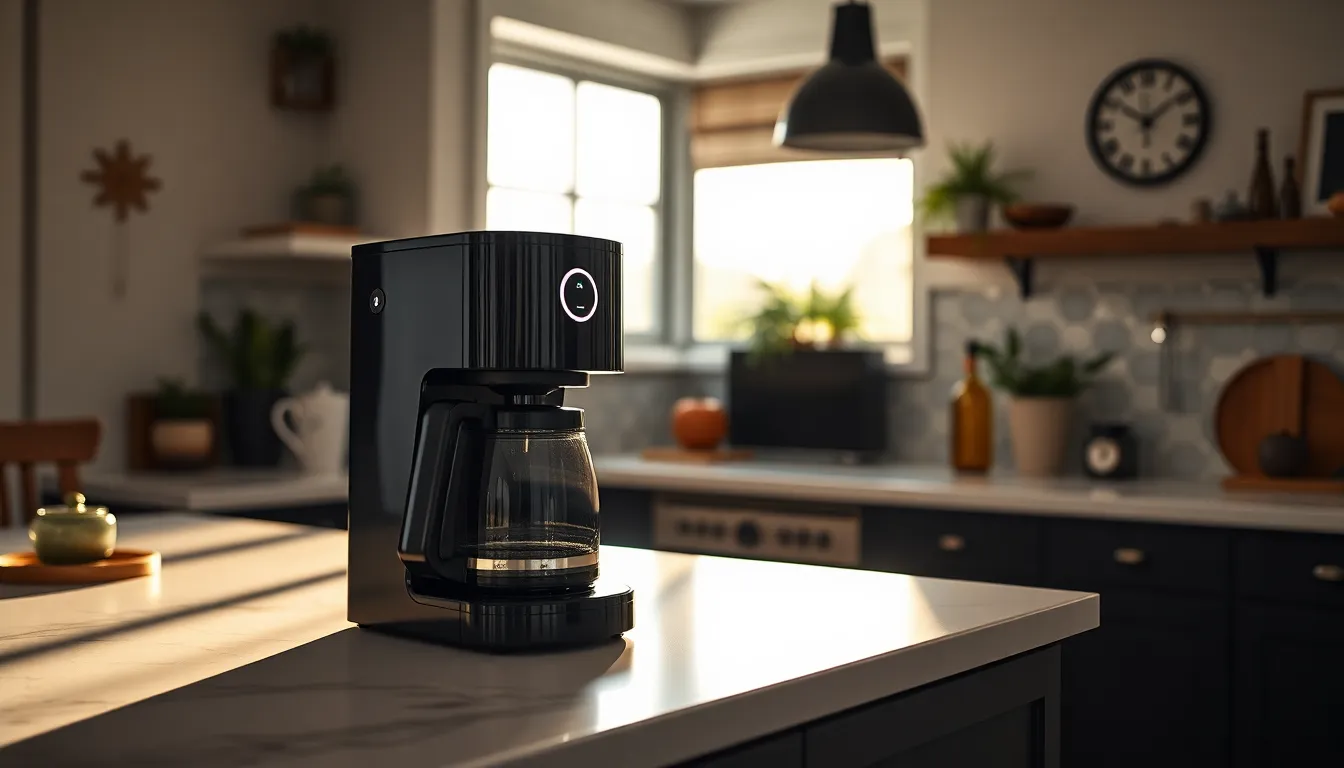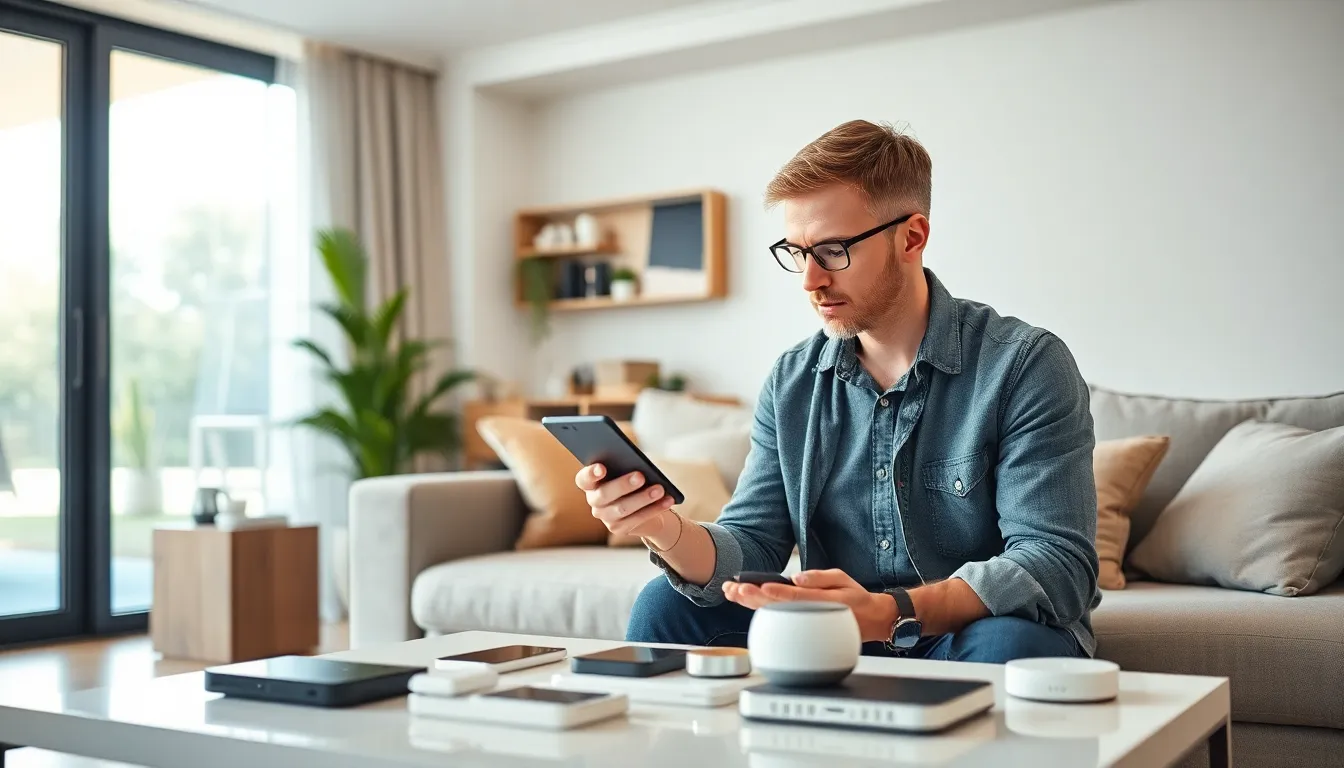Table of Contents
ToggleIn a world where your fridge can remind you to buy milk and your thermostat knows when you’re cold, IoT alerts are the unsung heroes of modern living. These clever notifications keep users in the loop, transforming everyday objects into smart companions that make life just a bit easier. Imagine a life where your coffee maker knows you need that caffeine boost before you even wake up—now that’s the future!
But let’s face it, not all alerts are created equal. Some are as useful as a screen door on a submarine, while others can save the day. Understanding the power of IoT alerts can turn a mundane routine into a symphony of convenience and efficiency. So buckle up and get ready to dive into the fascinating world of IoT alerts, where technology meets practicality with a sprinkle of humor.
Overview of IoT Alerts
IoT alerts play a crucial role in enhancing user experiences with connected devices. These notifications inform users about their devices’ status, potential issues, or recommended actions. Alerts can stem from various sources, including sensors, software updates, or predictive analytics.
Smart home devices offer real-time alerts that improve convenience. For instance, a security camera can send notifications if it detects unusual movements. This functionality allows users to take immediate action, bolstering home security.
In addition, health monitoring devices like wearables generate alerts for vital measurements. Such notifications enable users to track their health and receive timely advice. Individuals can benefit from early warnings about potential health risks.
IoT alerts can also lead to energy efficiency. Smart thermostats often send alerts regarding energy usage patterns. With this information, users can adjust settings to save on energy bills.
Not every alert proves useful. Users may experience an overload of notifications from various devices. Prioritization of alerts enhances effectiveness, ensuring users only receive critical notifications.
The implementation of machine learning improves alert relevance. With it, devices learn user preferences and provide tailored notifications. This personal touch increases the overall value of IoT alerts.
Interoperability between devices enhances the alert system. When multiple devices communicate seamlessly, users receive comprehensive information. Smart ecosystems make managing tasks and notifications easier.
Ultimately, IoT alerts contribute significantly to the automation of daily routines. They transform devices into proactive tools that not only respond but also anticipate user needs. Integrating these alerts into everyday life exemplifies a shift towards smarter living environments.
Importance of IoT Alerts
IoT alerts play a crucial role in optimizing technology use in everyday life, influencing convenience and security directly.
Impact on Data Security
IoT alerts enhance data security by providing real-time notifications about unusual activities. Users receive immediate warnings if unauthorized access occurs, allowing them to take prompt actions. Data breaches could become less likely when alerts identify potential threats early. Regular updates about device vulnerabilities also empower users to maintain the integrity of their devices. Users can receive reminders to implement security measures, such as changing passwords or updating software, ensuring their information stays protected. With alerts tailored to user preferences, immediate attention to critical issues improves overall security measures.
Enhancing User Experience
Notifications generated by IoT alerts significantly enhance the user experience. Users appreciate timely updates regarding device status, allowing them to manage their environments effectively. Smart home devices can alert users about maintenance needs, helping to prevent malfunctions. Health wearables provide instant feedback on vital signs, enabling users to monitor their well-being continuously. By prioritizing alerts based on urgency, users only receive the most pertinent information, reducing notification overload. Personalized notifications help users engage with devices, promoting satisfaction and fostering reliance on technology in daily routines. Enhanced user experiences lead to smarter, more intuitive living environments.
Types of IoT Alerts
Various types of IoT alerts enhance user experiences across different devices. Understanding these categories helps users take full advantage of smart technology.
Real-Time Alerts
Real-time alerts provide immediate updates on device status. For instance, smart security cameras send notifications when motion is detected, allowing users to monitor their properties actively. Wearable fitness trackers offer updates on heart rate or activity levels, enabling users to make quick health-related decisions. Immediate notifications can prevent potential issues, such as appliances overheating or leaks in smart plumbing systems. By delivering relevant information as events unfold, real-time alerts significantly enhance user engagement with connected devices.
Scheduled Alerts
Scheduled alerts facilitate routine management for users. Smart thermostats, for example, can notify users about optimal times to adjust the temperature for maximum energy efficiency. Daily reminders for watering plants from smart home systems help maintain greenery effortlessly. Another common application involves notifying users of routine maintenance for appliances, such as changing air filters. These scheduled notifications promote proactive device management, ensuring tasks are completed in a timely manner.
Conditional Alerts
Conditional alerts respond to specific user-defined criteria. These notifications trigger based on pre-set conditions, such as notifying users when outdoor temperatures drop below a specific threshold. For example, a smart irrigation system may activate watering only when soil moisture falls beneath an optimal level. Similarly, smart refrigerators can alert users when food items approach their expiration dates. By focusing on context-sensitive notifications, conditional alerts offer tailored information that significantly boosts convenience for users.
Best Practices for Implementing IoT Alerts
Implementing effective IoT alerts requires careful planning and user-focused strategies. These practices enhance user engagement and streamline communication.
Choosing the Right Notification Channels
Selecting appropriate notification channels ensures users receive alerts through preferred methods. Email, SMS, and mobile app notifications serve as common channels. Each channel offers unique advantages: email provides detailed information while SMS delivers instant updates. Mobile app notifications engage users through rich content and interactivity. By understanding users’ preferences, organizations prioritize channels that increase alert visibility and response rates. Consideration of user demographics and contexts also shapes the decision process, fostering more effective communication.
Customizing Alerts for Users
Tailoring alerts enhances user experience and improves interaction with devices. Customizable settings enable users to define preferences based on urgency, frequency, and types of notifications. Users appreciate having the option to enable or disable specific alerts, ensuring only relevant information reaches them. Contextual relevance increases when alerts align with user behavior and lifestyles. Integration of machine learning can predict user needs, offering personalized notifications that adapt over time. Prioritizing customization leads to proactive engagement, allowing users to gain maximum value from their IoT devices.
Conclusion
IoT alerts are transforming how individuals interact with their devices by enhancing convenience and security. These notifications empower users to manage their environments more effectively while promoting energy efficiency and health monitoring.
By prioritizing the relevance of alerts and personalizing notifications, users can enjoy a seamless experience that aligns with their unique needs. As technology continues to evolve, the role of IoT alerts will only grow, making smart living more intuitive and proactive. Embracing these advancements allows users to fully harness the potential of their connected devices, paving the way for a more automated and responsive lifestyle.





